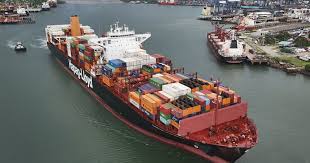The waterway managers announced on Monday that a court decision may allow the building of a new reservoir to supply water to the Panama Canal.
The Panama Canal has limited the number of ships that can travel through each day due to a drought causing a decrease in the supply of fresh water required to operate the locks.
The project’s construction phase is set to last between three to four years.
Panama has long desired to construct an additional reservoir to support the primary water source from Lake Gatun, however, a rule implemented in 2006 prevented any expansion beyond the original watershed area.
Ilya Espino, the assistant canal administrator, thinks that the discussions might last for 18 months.
After that, the construction could take three to four years.
The entire project is expected to unfold over a six-year period, as indicated in our timeline and analysed in terms of social, environmental, construction, and reservoir filling considerations.
According to the Panama canal administrator, “the reservoirs are essential not just for the operation of the Panama Canal, but also to guarantee access to clean drinking water for the Panamanian population, as required by law.”
The rainfall has been insufficient to support the watershed system of rivers and streams that supply water to the current reservoir system, which in turn fills the locks that transport ships over the terrain.
This watershed is also essential for providing freshwater to Panama City, where about half of the country’s 4 million people live.
But in order to proceed with the project near the Indio River basin, authorities will need approval from the roughly 12,000 residents residing in about 200 villages in the vicinity.
Global shipping has been thrown into disarray due to the decrease in canal traffic to 31 ships per day, compared to the typical 36 to 38.
The disruption comes at a time when other important water routes are experiencing difficulties, exacerbated by attacks on ships in the Red Sea by Yemen’s Houthi rebels, which have forced vessels to take longer and more expensive routes around Africa.
